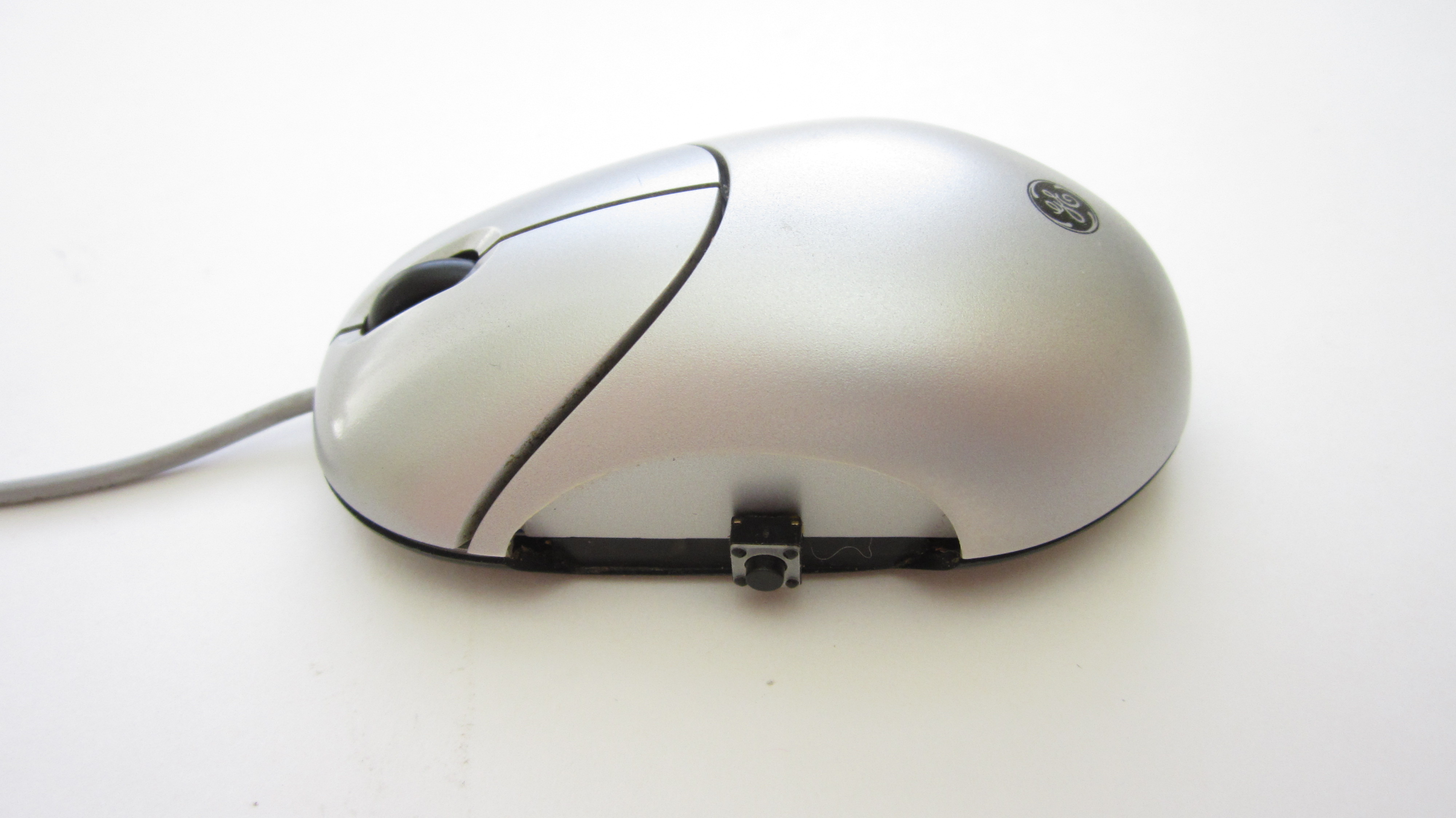The circuit used in this project is based around the 555 timer IC. Power for this circuit is supplied by the 5V line from the computer that also powers the mouse. This is connected to pins 4 and 8 of the IC. The output of this circuit is a series of pulses that alternate between HIGH (5 volts) to LOW (0 volts). This is what will activate and deactivate the click function of the mouse. A small diode is added to the output to prevent the circuit from shorting out if the rapid fire button and the left mouse button where ever pressed at the same time. This circuit is connected to the mouse through a small momentary switch that acts as the rapid fire button.
The frequency of these pulses is determined by the value of the capacitor that is connected to pins 1 and 2 and the value of the resistor that is connected to pins 2 and 3. I used a 10 µF capacitor and a 4.7 kohm resistor. This produces a frequency of about 15 Hz (about 900 pulses per minute). By decreasing the value of the resistor and or the capacitor, it will increase the output frequency. By increasing these values, it will reduce the output frequency. If you would like to calculate the exact frequency you can use the following formula.
Frequency = 0.72 / (R x C)
“R” is in units of ohms and “C” is in units of Farads.
I first prototyped this circuit on a breadboard for testing and then I soldered it together onto a small printed circuit board.




